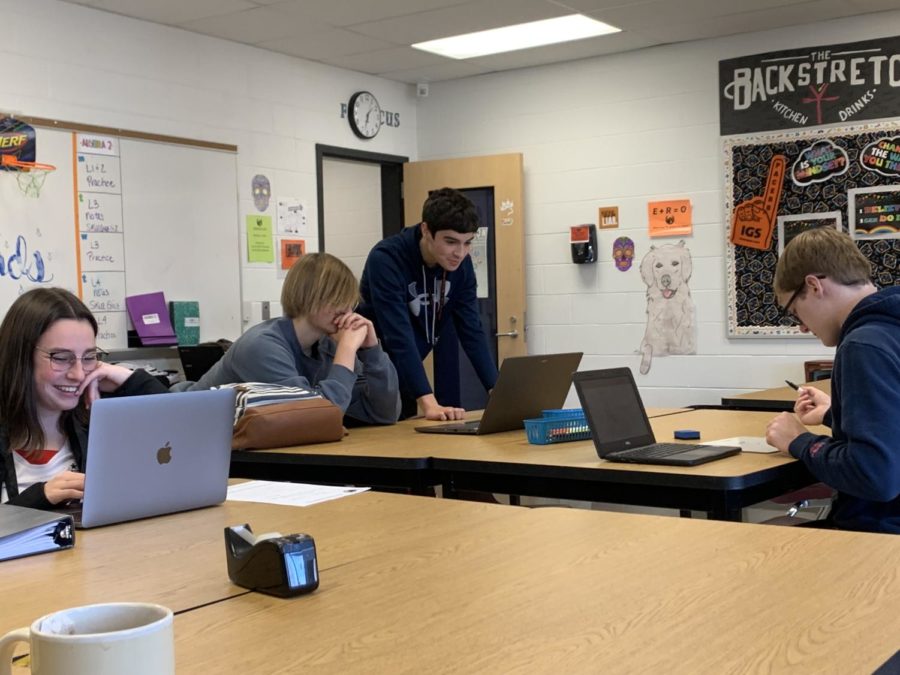Last month, five students from Joanne Meyer’s AP Computer Science class were invited to take part in a NASA initiative to develop an app to aid the Artemis Lunar Program.
The initiative, called the App Development Challenge, is one of several challenges NASA is hosting, all of which will aid in space exploration. Five students– seniors Jacob Payne, Meg Wolf, Adam Fronduti and Paul Gabel, and junior Rosemary Cranston– are participating in the project, which is run by the Space Communications and Navigation Program at NASA.
“So, I got an email about how NASA does challenges, there are multiple ones and you have to apply,” Meyer said. “But the reason this sparked my interest was [because] it’s about coding.”
The app will provide navigational information for Artemis III, NASA’s first planned manned lunar landing since Apollo 17 in 1972. Students will have to create an app that can visualize one of the 13 possible landing sites. Hayes students were assigned to the Nobile Ridge site, which sits on the edge of the Nobile Crater, located on the south pole of the Moon.
“It’s cool because it’s NASA,” Meyer said. “The moon is cool.”
The students are given a little over two months, October 5 through December 14, to complete the app and submit it to NASA. Since the contest is international with many schools competing, the judging process, operated by NASA engineers, will last until April 2023.
Payne is currently working on the point-of-view features of the app. He said that he spends approximately an hour a day coding the platform.
“It’s been fun because it’s a completely new experience and you get to learn all this stuff,” Payne said. “But, it’s also frustrating because I’m learning completely new encoding. So, writing in that is difficult. Plus [you’re] using logic and having to think about how you want to do something before trying to put that into the computer.”
This project has given students the opportunity to be involved in monumental research.
“The Moon is often thought of as a test bed for Mars because it is so close,” Cranston said. “It is astounding that we can take part in these groundbreaking discoveries with our app development.”
Every student involved has a different task they must complete each week. The tasks are assigned by the group’s mentor. The project requires each participating group to have a mentor, which is usually provided by NASA, but not in Hayes’ case.
The mentor for the Hayes group is Mikel Cvetanovic, who is a retired NASA engineer with a degree in mechanical engineering. Currently, he is working as a Computer Science Engineer for the Space Force. Cvetanovic and Meyer graduated from Hayes together. So, instead of accepting a stranger that the students would have to call for instruction, Meyer said that she thought this could be more personal and beneficial.
The students have Zoom meetings with Cvetanovic twice a week, sometimes for longer than three hours at a time. Cvetanovic, as the mentor, helps the students develop their ideas and provides an outline of how the students can accomplish their weekly goals.
“We give [Cvetanovic] our ideas, like what we want it to look like, and he basically says, ‘Okay, so here’s how we’re going to achieve that,’” Payne said.
If the students manage to be one of the ten teams selected in April by NASA, they will have the opportunity to visit a NASA facility, where they may get to experience a live rocket launch and interact with engineers and others working at NASA.
Regardless of the outcome, Meyer said she believes that working on this project will be worth it for everyone involved.
“We are probably not going to win, but we [will have] failed brilliantly because we got this done and accomplished,” she said.
This story was originally published on Hayes Talisman on December 2, 2022.




































